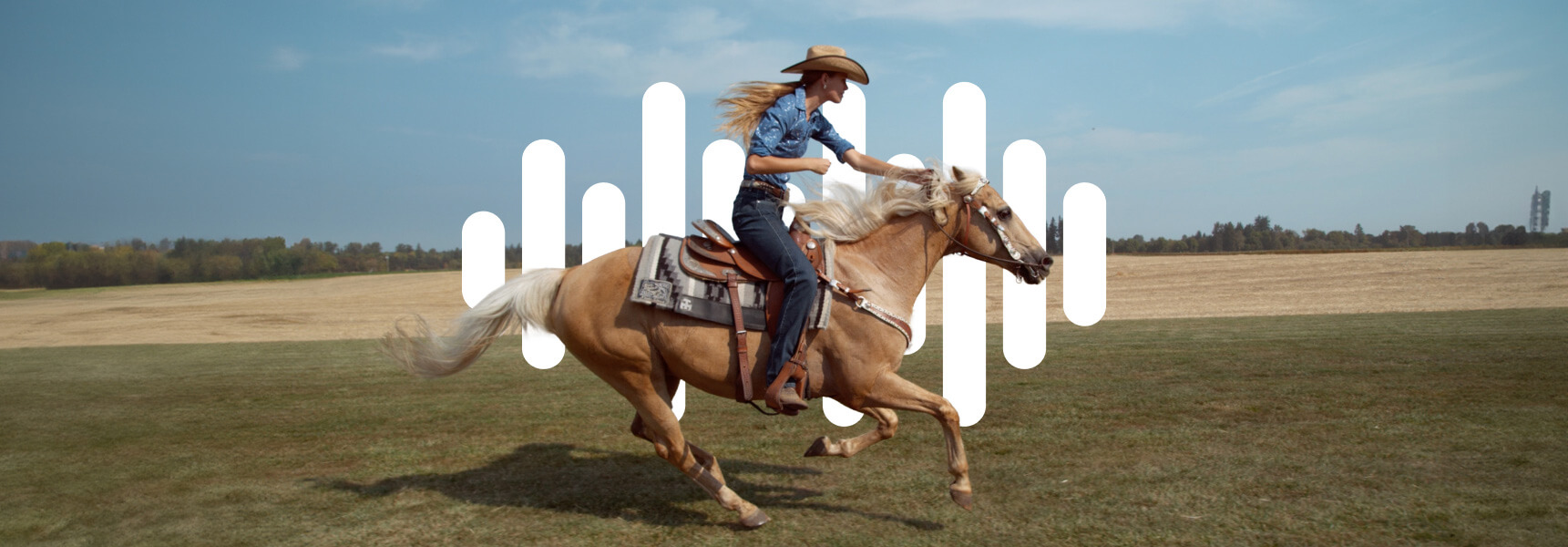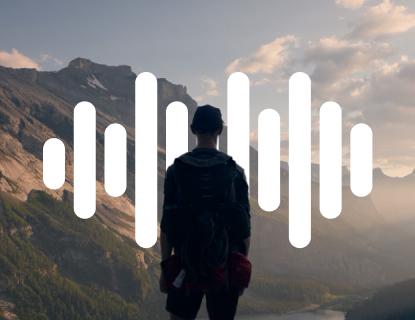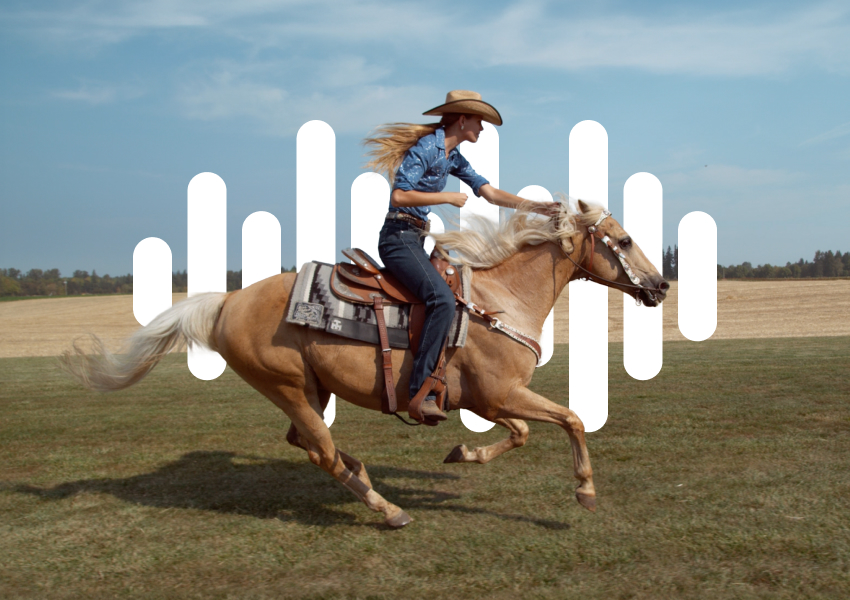It’s just as those sci-fi films predicted: robots are taking over. Well, almost. It certainly seems like that with the latest advancements in voice cloning technology. New AI developments are transforming how content is produced within the entertainment, education, hospitality, and customer service sectors and will drastically change how filmmakers and content creators work with audio.
This blog will explore the evolution of voice cloning, the ways in which it will disrupt and enhance the creative industries, and how Artlist users can navigate the technology to engage their audiences and improve audience experiences.
What’s voice cloning?
Voice cloning uses advanced algorithms and machine learning techniques to replicate a person’s voice. The software can analyze speech patterns, intonations, accents, and other human-like nuances to generate synthetic voices that sound similar to the original speaker. Users can input a voice of their choice and use it to voice their content. This technology will significantly impact how we interact with digital media and is also revolutionizing accessibility for people with speech disabilities.
Historical background
Although it’s being described as cutting-edge new technology, voice cloning has actually been around as a concept since the early days of computer science. The first voice cloning technology was launched in 1998 by a group of researchers at the University of California, Berkeley. In 2002, this technology was upgraded to generate more realistic human speech, and in 2010, a deep learning-powered voice cloning system developed the tech even further.
In 2020, voice cloning technology was launched commercially for the first time, allowing filmmakers and creators to experiment with AI-generated technology to enhance their content. Today, the technology has advanced so much that it’s impossible to distinguish the voice clone from the human it’s mimicking. It sounds kind of sinister, but if used ethically and responsibly, it will revolutionize the way we consume content and significantly improve the lives of people with speech disabilities.
Ways to use voice cloning
Videos and digital media
Opportunities to use voice cloning within film, video, and digital media are close to endless. Content creators can integrate human-sounding synthetic voices into their social media content to create a viewer experience that better engages with audiences and fosters connection. Artlist creators who spend hours dubbing voiceovers can do it in a matter of seconds without sacrificing quality. Filmmakers who want to release their work in multiple languages can generate custom voices in a cost-effective way and create voices for animated characters without having to hire a voice-over artist.
Creating synthetic voices for characters
Voice cloning is making big waves in film, gaming, and podcasts, as it enables creators to design the voices of their fictional characters. These voices can be personalized to match specific roles and personalities, like charismatic protagonists or evil villains. Crafting the essence of a character using sophisticated voice cloning software will create an engaging and compelling viewer experience.
Accessibility and assistive technology
Arguably, one of the most crucial aspects of voice cloning technology is its accessibility features, specifically for people with speech disabilities. The technology can help in the following ways:
Personalized voices
Voice cloning technology creates synthetic voices that closely resemble the user’s natural voice. For individuals with speech disabilities, this means they can now communicate using a voice that reflects their identity rather than relying on generic robot voices. This can really enhance someone’s sense of autonomy and self-expression.
Natural communication
Traditional text-to-speech (TTS) systems tend to produce unnatural-sounding voices that lack tone or nuance. However, voice cloning technology will make communication smoother and more intuitive and help foster better connections with listeners.
Improved pronunciation and intonation
Voice cloning algorithms capture the nuances of human speech, including pronunciation, intonation, and emotional expression. Users can convey subtle nuances and emotions in their speech, which can accelerate effective communication in social and professional settings.
Enhanced assistive devices
Voice-controlled devices like smartphones, tablets, and smart speakers use voice cloning technology to provide more inclusive and user-friendly experiences. By customizing their device’s voice to match their own and suit their preferences, these devices can effectively meet the diverse needs of their users.
Accessibility in education and employment
By offering students and employees with speech disabilities access to personalized, natural-sounding voices, this AI voice cloning technology can improve participation in classroom discussions, presentations, and meetings, leveling the playing field and providing more connected and fulfilling experiences.
Personalization in technology
In our hyper-personalized world, voice cloning is pivotal in shaping user interactions and experiences with virtual assistants like Siri and Alexa. With natural-sounding voices, people are experiencing more satisfying connections with their devices.
Through personalized voice cloning, developers can customize voice notifications and prompts to align with their customers’ preferences and forge a unique relationship and brand identity.
Voice cloning has significant implications for virtual assistants, transforming them from generic tools into personalized companions. With customized voices, virtual assistants can establish a stronger rapport with users, fostering a sense of familiarity and trust.
Difference between voice cloning and voice-over
While both voice cloning and voice over involve synthesizing human-like voices, they serve distinct purposes and utilize different kinds of technology. Voice cloning replicates a specific person’s voice, capturing their unique vocal characteristics. Voice over usually involves hiring professional actors or voice artists to narrate content without necessarily mimicking a particular individual.
Dubbing vs. voice-over
These two types of AI audio technology serve very different purposes in multimedia production. We’re all familiar with dubbing – it’s when the original dialogue on a TV show or film is replaced by a translated voice. It’s layered over the original sound and often looks like someone is lip-synching out of time. Although the film’s overall aesthetic is preserved, it’s not always the best viewer experience and is considered a low-quality solution. Voice over involves adding supplementary narration to a video, rather than replacing the speech, to provide context or clarification without altering the original dialogue.
Wrapping up
Voice cloning represents a new fusion of technology and creativity. It offers creators opportunities to innovate, explore their brand voice, and form deeper connections with audiences. It’s already transforming the entertainment industry and significantly improving the quality of life for people with speech disabilities. As with all AI technology, there’s always the question of ethics, but in general, the power of voice cloning can unlock new realms for creators, transforming how we interact with technology and how technology interacts with us.
Did you find this article useful?







